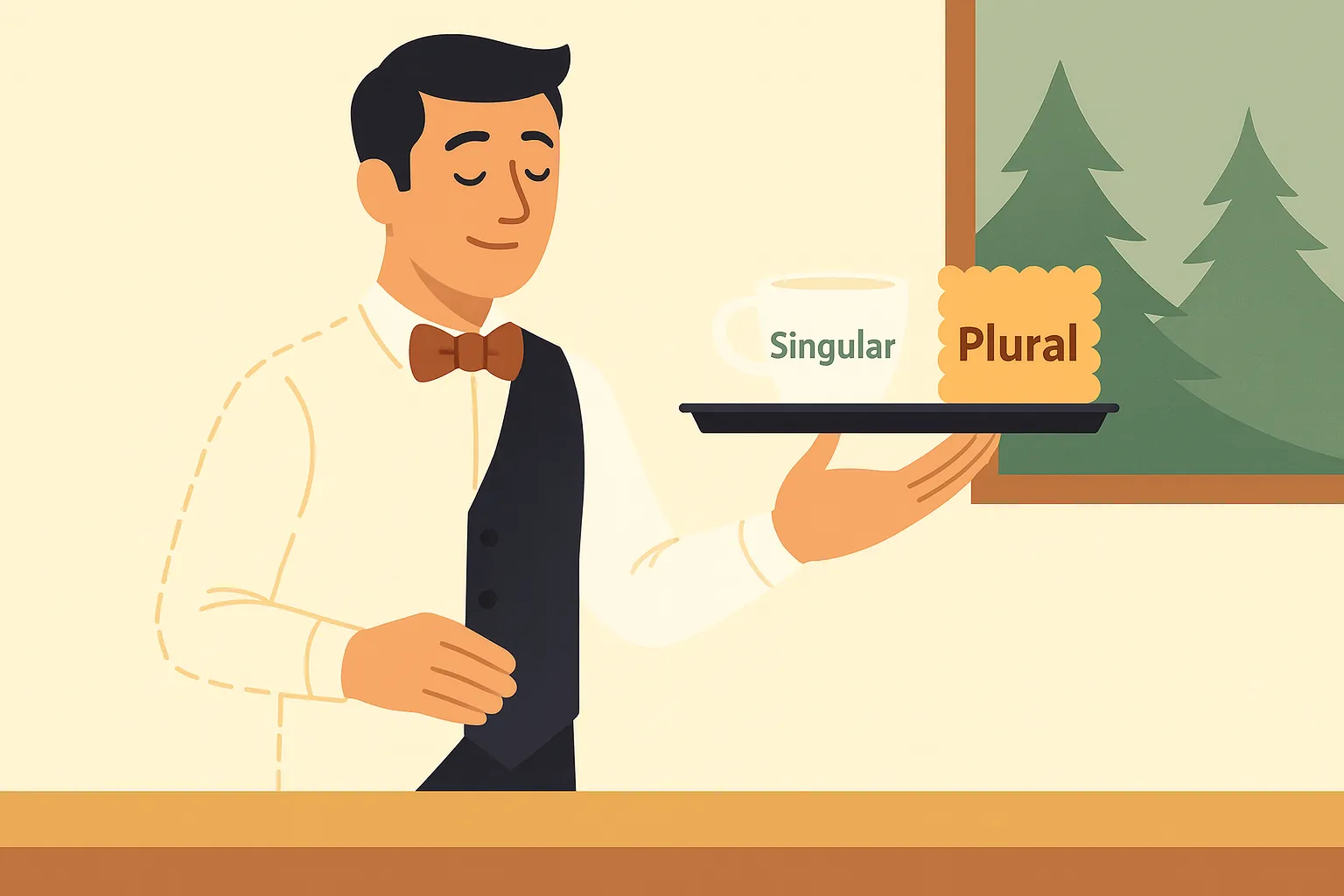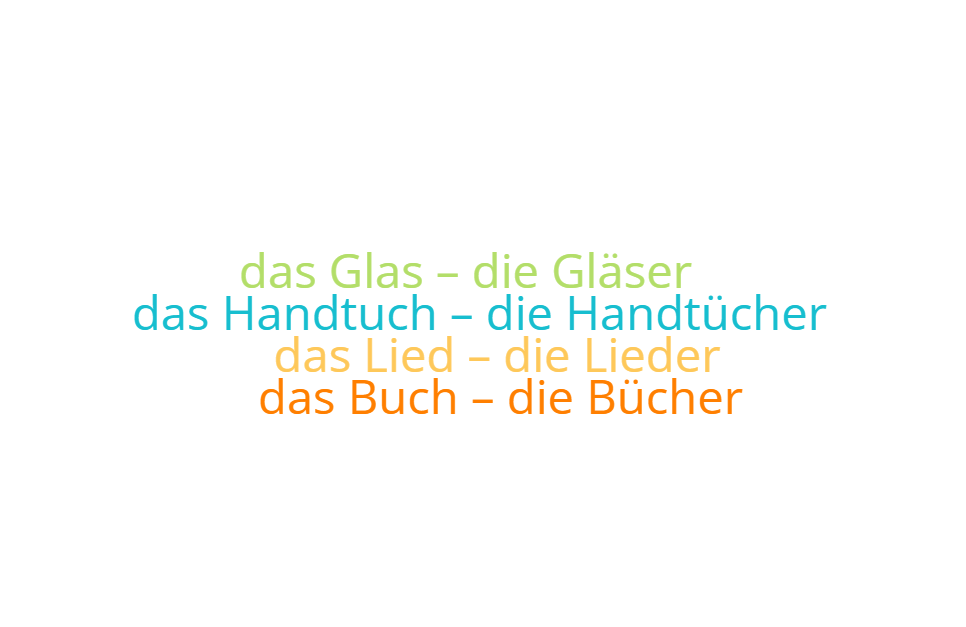Elisa singt Lieder
Situation
On the last page of the brochure in German, Ermanno finds the picture of Elisa at the piano, with a microphone in her hand. Ermanno translates the sentence under the picture for Oliver into English: "Elisa plays the piano. She sings and tells stories. She knows many songs, stories, and dreams."

Elisa spielt Klavier. Sie singt und erzählt. Sie kennt viele Lieder, Geschichten und Träume.
Lesson
The waiter becomes visible and explains German plural endings.

Explaining German plural endings with one sentence
Elisa spielt Klavier. Sie singt und erzählt. Sie kennt viele Lieder, Geschichten und Träume.
Lieder (songs) → plural of Lied
Geschichten (stories) → plural of Geschichte
Träume (dreams) → plural of Traum
- Masculine and some neuter nouns often take -e in the plural.
- Often with umlaut: Traum → Träume
So in this one short text, you see three major plural patterns in German:
-
-er + umlaut (Lied → Lieder)
-
-n / -en (Geschichte → Geschichten)
-
-e + umlaut (Traum → Träume)
Oliver's Homework
Max arrives and says to Oliver: "Write a short dialogue between yourself and me, using this picture as inspiration. I give you the instruction (for example: “Zeig mir zwei Bücher”), and you respond by repeating the sentence (for example: “Das sind zwei Bücher”)."

Ermanno's Homework
Answer the questions:
-
Wie viele deutsche Lieder kennst du?
-
Wie viele Bücher kaufst du für den Deutschunterricht?
-
Wie viele Gläser benutzt du an einem Tag?
-
Wie viele Handtücher hängen in deinem Badezimmer?
Zampettone's Word Flock

See you for the next lesson where we learn (or repeat) the plural ending in -en!